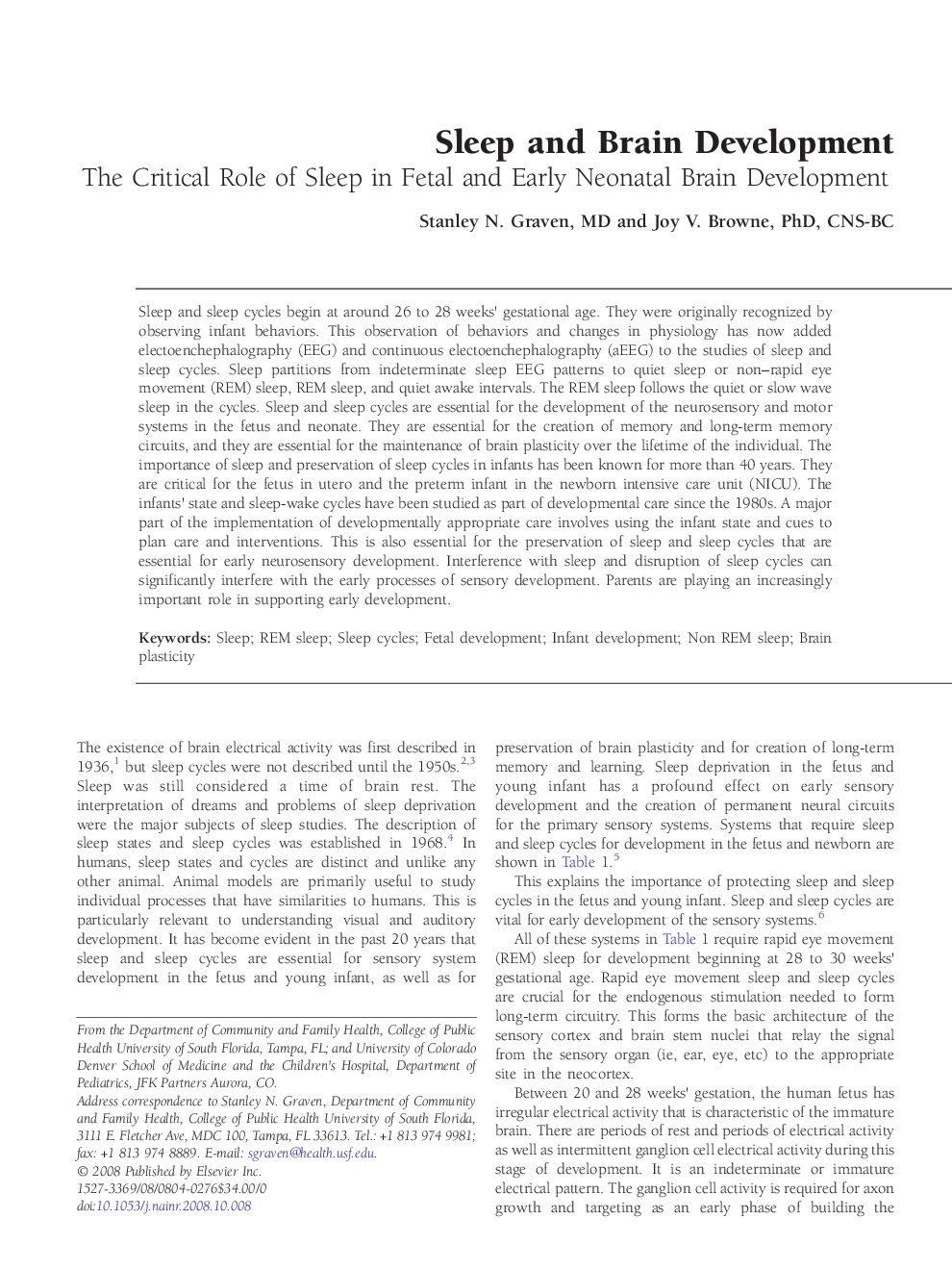| Article ID | Journal | Published Year | Pages | File Type |
|---|---|---|---|---|
| 2675916 | Newborn and Infant Nursing Reviews | 2008 | 7 Pages |
Sleep and sleep cycles begin at around 26 to 28 weeks' gestational age. They were originally recognized by observing infant behaviors. This observation of behaviors and changes in physiology has now added electoenchephalography (EEG) and continuous electoenchephalography (aEEG) to the studies of sleep and sleep cycles. Sleep partitions from indeterminate sleep EEG patterns to quiet sleep or non–rapid eye movement (REM) sleep, REM sleep, and quiet awake intervals. The REM sleep follows the quiet or slow wave sleep in the cycles. Sleep and sleep cycles are essential for the development of the neurosensory and motor systems in the fetus and neonate. They are essential for the creation of memory and long-term memory circuits, and they are essential for the maintenance of brain plasticity over the lifetime of the individual. The importance of sleep and preservation of sleep cycles in infants has been known for more than 40 years. They are critical for the fetus in utero and the preterm infant in the newborn intensive care unit (NICU). The infants' state and sleep-wake cycles have been studied as part of developmental care since the 1980s. A major part of the implementation of developmentally appropriate care involves using the infant state and cues to plan care and interventions. This is also essential for the preservation of sleep and sleep cycles that are essential for early neurosensory development. Interference with sleep and disruption of sleep cycles can significantly interfere with the early processes of sensory development. Parents are playing an increasingly important role in supporting early development.
